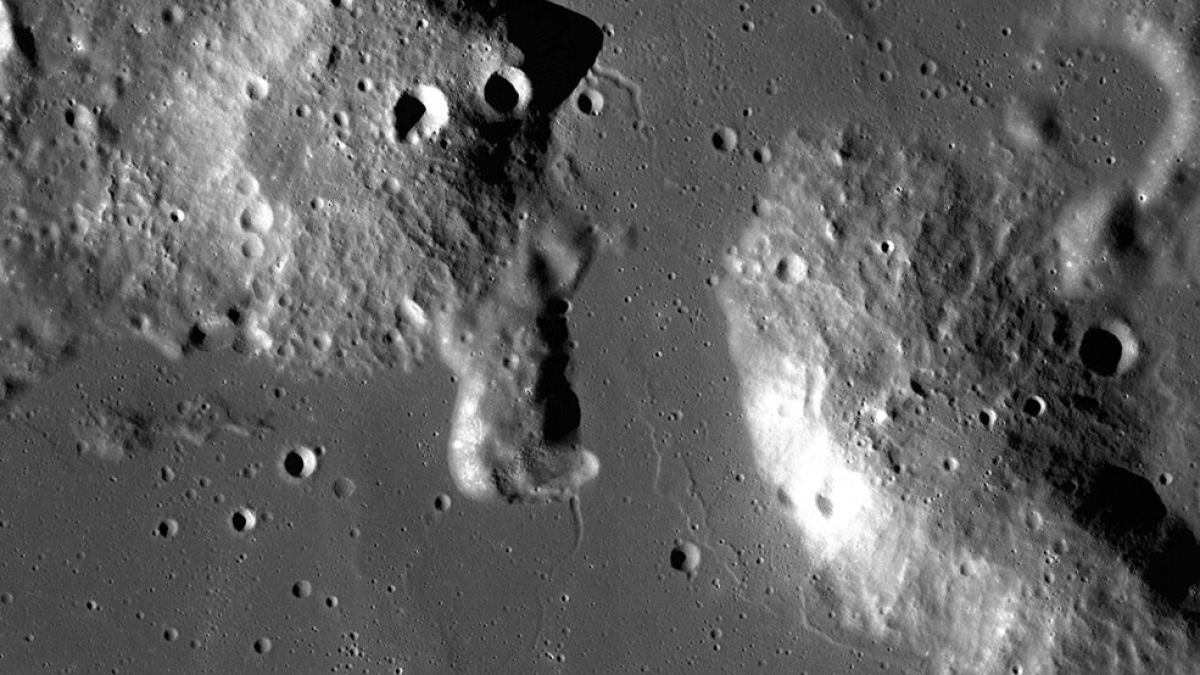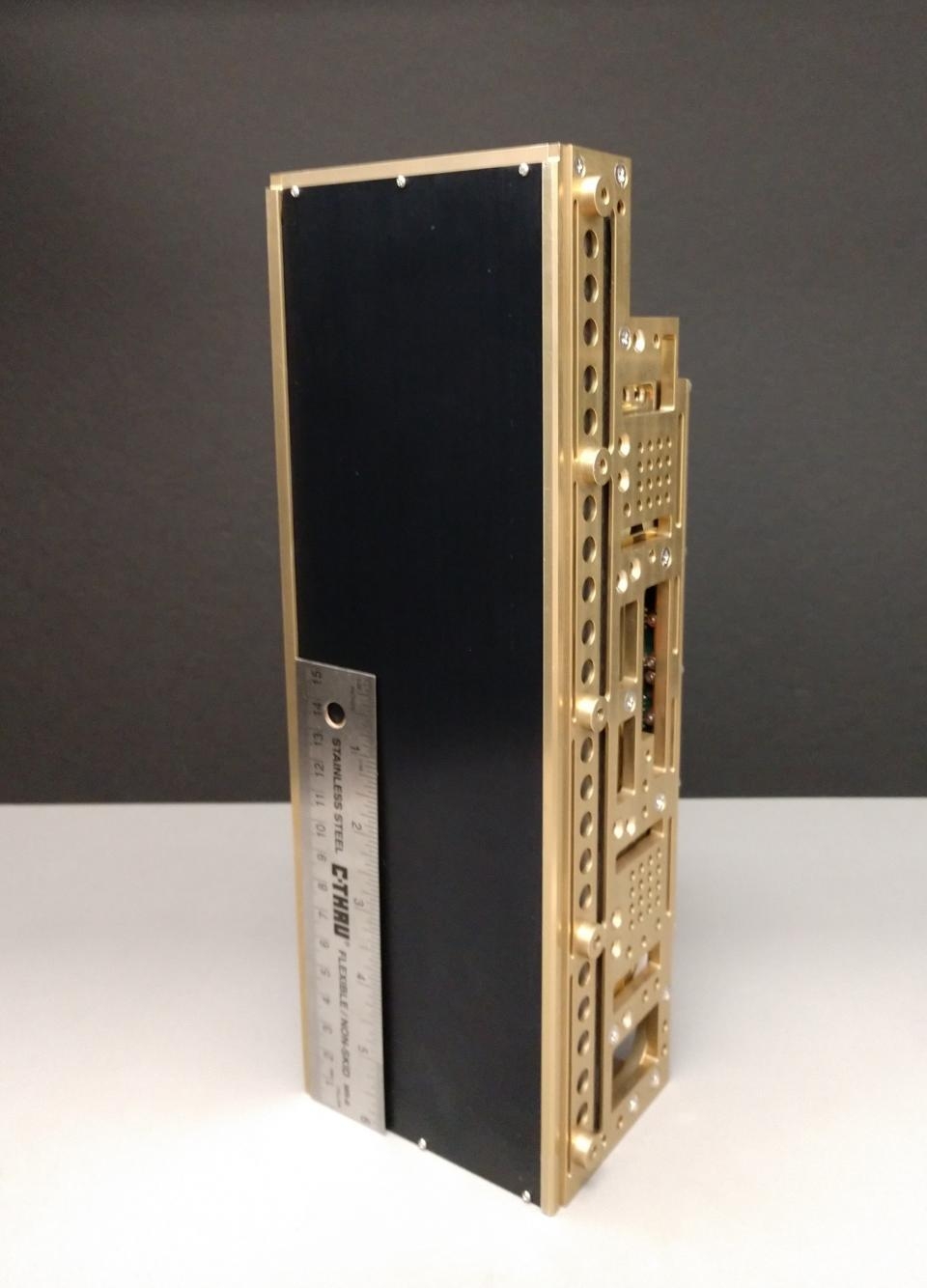On the surface of the moon stand two large geological domes of unique composition — each similar in size to Mount St. Helens — but how they formed on the lunar terrain remains a mystery.
On Earth, similar features typically form from highly viscous magmas, commonly composed of much more quartz and much less iron than is typical for the rocks found on the moon.
Dome-like volcanic formations like these need a significant amount of repeated reworking and reprocessing of rocks and minerals to form. On Earth, this can be aided by our oceans of water and plate tectonics, but without these key ingredients on the moon, planetary scientists have been left to wonder how these domes formed and evolved over time.
A new NASA space mission involving Arizona State University and led by Kerri Donaldson Hanna of the University of Central Florida aims, for the first time, to answer key questions about how these formations came to be.
“This will be the first time that we have investigated these types of features up close on the surface of another planetary body,” said Craig Hardgrove, co-investigator of the Lunar Vulkan Imaging and Spectroscopy Explorer (Lunar-VISE) mission. Hardgrove, an assistant professor in the School of Earth and Space Exploration and director of projects for ASU’s NewSpace Initiative, will develop an instrument that will be part of Lunar-VISE.
“We are thrilled that our complimentary suite of instruments from ASU and Ball Aerospace were selected to rove about and study the Gruithuisen Domes to better understand how they formed,” added Donaldson Hanna, principal investigator of Lunar-VISE.
ASU News spoke to Hardgrove to discuss the exciting lunar research, ASU’s key role and what the findings could mean for the future of the moon.
Question: Can you tell us about the moon’s Gruithuisen Domes? And what are the goals of this space mission?

Craig Hardgrove
Answer: The Gruithuisen Domes are hypothesized to be rhyolitic domes that formed by a sticky magma rich in silica, similar in composition to granite, but it’s a little bit of a mystery how we get these more evolved compositions on planetary bodies like the moon that don’t have large bodies of water or plate tectonics.
For this mission, we want to sample around these dome features to understand how they formed. There are a few different hypotheses and many papers over the last 20 or 30 years characterizing these features from orbit, but we still don't know how they formed.
If we can measure the composition of the rock around the domes, as well as some of the dome material itself, that'll help us figure out which process was at work.
Q: How is ASU involved?
A: I'm a co-investigator and instrument scientist on the mission, and our group at ASU will be providing NASA with a neutron and gamma-ray spectrometer that will be mounted on the rover and land on the surface of one of the Gruithuisen Domes.The neutron and gamma-ray spectrometer is an instrument that will measure the elemental composition and hydration of the surface around the domes down to about a meter (3 feet) into the ground.
With it, we’ll get information about all the elements in the rocks in the ground surrounding the rover – how much thorium, how much iron, how much silicon, as well as how much hydrogen, which tells us about the telltale presence of water in the area.
Q: Will the neutron and gamma-ray spectrometer be designed and built at ASU?
A: Yes, ASU is leading the development and delivery of that instrument to the Lunar-VISE rover. The instrument will be designed and built here at ASU in one of our clean rooms in ISTB4. This is made possible, in part, because of the academic and commercial collaborations we have through ASU NewSpace, and the instrument will be based on our previous instrument, the Miniature Neutron Spectrometer (Mini-NS), which was developed for the LunaH-Map mission.
We will be qualifying the instrument here, doing thermal vacuum testing and making sure it's ready for operations on the surface of the moon and that it can survive all the launch loads it will experience on its trip to the moon. We will deliver it to Ball Aerospace in Colorado, who's doing instrument integration into the rover.
Once on the moon, all the scientific data that the neutron and gamma-ray detector collects will come here to ASU, which we will process and analyze to provide measurements of the amounts of thorium, iron and other elements in the rocks, as well as potentially how much water is there.
The operation of the rover is planned to be 10 days long and launch is currently planned for 2026.
The design of the LunaH-Map Miniature Neutron and Gamma-Ray Spectrometer (Mini-NS), delivered to NASA in July 2021, will be used in the Lunar-VISE neutron and gamma-ray spectrometer. Photo courtesy ASU
Q: What do you think you will find?
A: Ideally, we would like to confirm or deny some of the excellent theories about the formation of these features that have been made from previous data that were collected from orbiting spacecraft. There have been many ideas about how these domes formed, and some of them say thorium levels should be high. Some of them say the thorium should be low. We are going to go to spots around the domes and measure it.
If we can measure thorium content, as well as the iron and other elemental contents of the rocks, that will be one piece of the puzzle to help us nail down a particular formation mechanism for these domes.
Q: Why is it important to know how and why these lunar domes formed?
A: This is a scientific mission of exploration. We don’t understand fully how these dome features formed and, for now, we only have theories. Proving one or more of our theories right or wrong will help us understand the history and evolution of the moon, our nearest planetary neighbor in space. Proving theories right or wrong is fundamental to our jobs as scientists and explorers, and it helps us understand the world and our place in it.
On Earth, geologists as far back as the early 1900s had a theory that plate tectonics was a dynamic happening on this planet. At the time, many people said it was crazy. Then, through careful study, they figured out that it was something that happened and had been happening over the planet’s evolution. Now, we take it for granted that the continents on our planet weren't always like they are today; they have moved around on the surface of the Earth.
Just like scientists tested those early theories on Earth, this mission will allow us to test theories about the formation of these domes on the moon, which will help us understand the lunar surface and interior have evolved over time. And hopefully, we can make predictions about how the moon will continue to evolve into the future. That may or may not have implications for the future of human life here on Earth. It's possible that we may find useful information about the mineral resources on the moon. We may learn that these domes are enriched in rare earth elements or potentially hydrated minerals; we simply don’t know. But to start with, we have to address the most fundamental questions, so we’re most curious about what these domes are and what they mean about the history of the moon.
Top image: NASA is planning to send a lander and rover to the beautiful Gruithuisen Domes, seen in this controlled mosaic, and LROC images will help guide the way. The domes are located at 36.3° N, 319.8° E. (Image 55 km wide, north is up.) Photo courtesy NASA/GSFC/Arizona State University
More Science and technology

4 ASU researchers named senior members of the National Academy of Inventors
The National Academy of Inventors recently named four Arizona State University researchers as senior members to the prestigious organization.Professor Qiang Chen and associate professors Matthew…

Transforming Arizona’s highways for a smoother drive
Imagine you’re driving down a smooth stretch of road. Your tires have firm traction. There are no potholes you need to swerve to avoid. Your suspension feels responsive. You’re relaxed and focused on…

The Sun Devil who revolutionized kitty litter
If you have a cat, there’s a good chance you’re benefiting from the work of an Arizona State University alumna. In honor of Women's History Month, we're sharing her story.A pioneering chemist…



